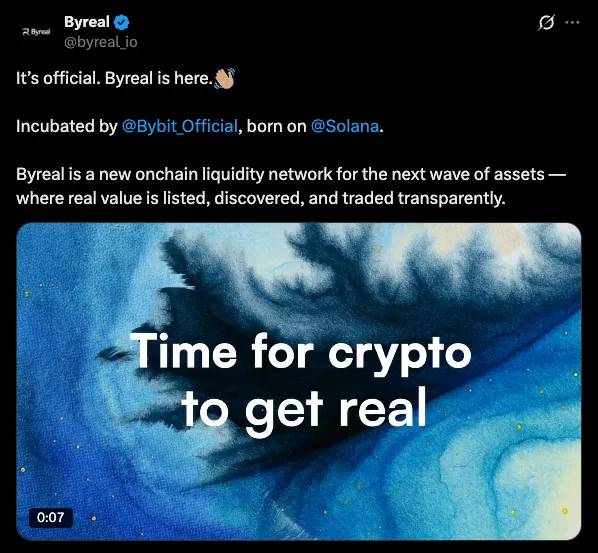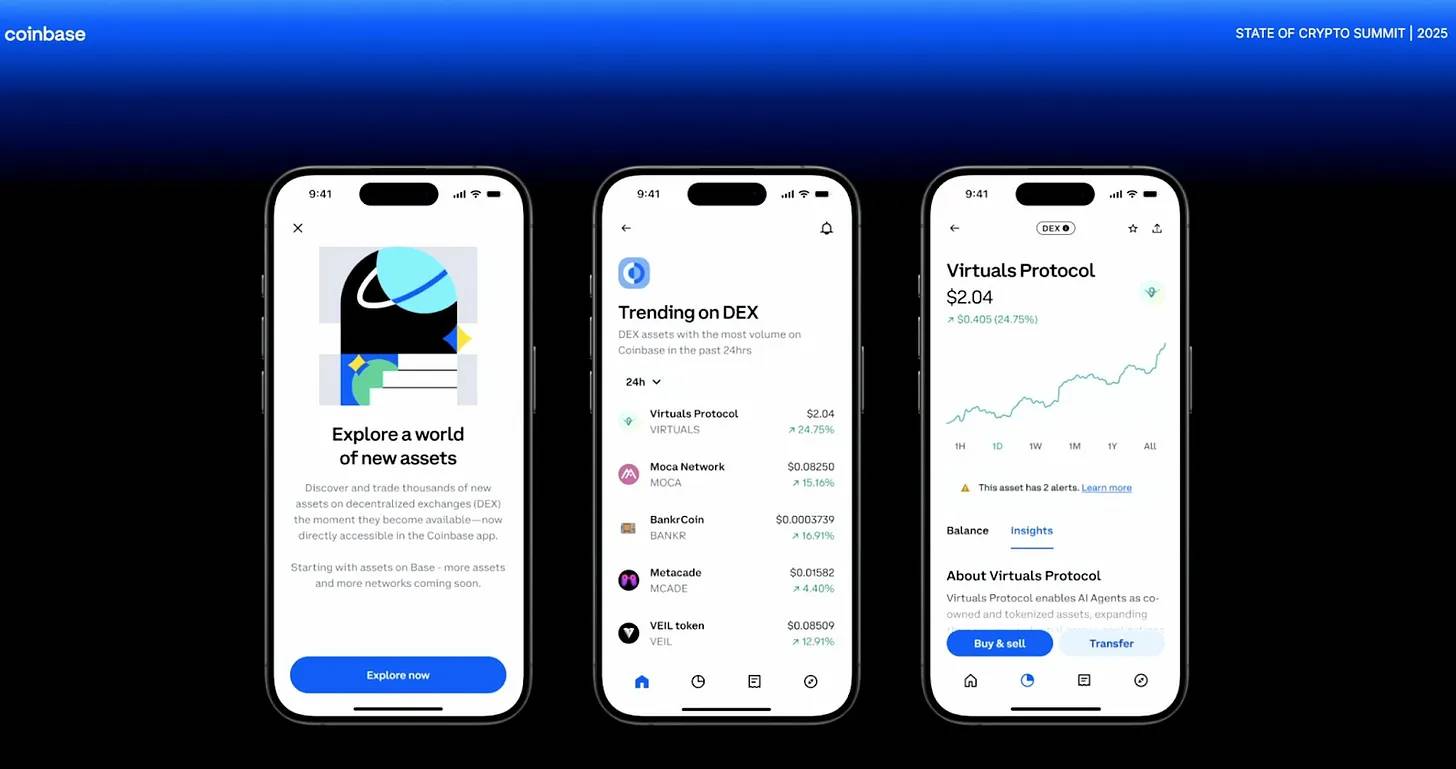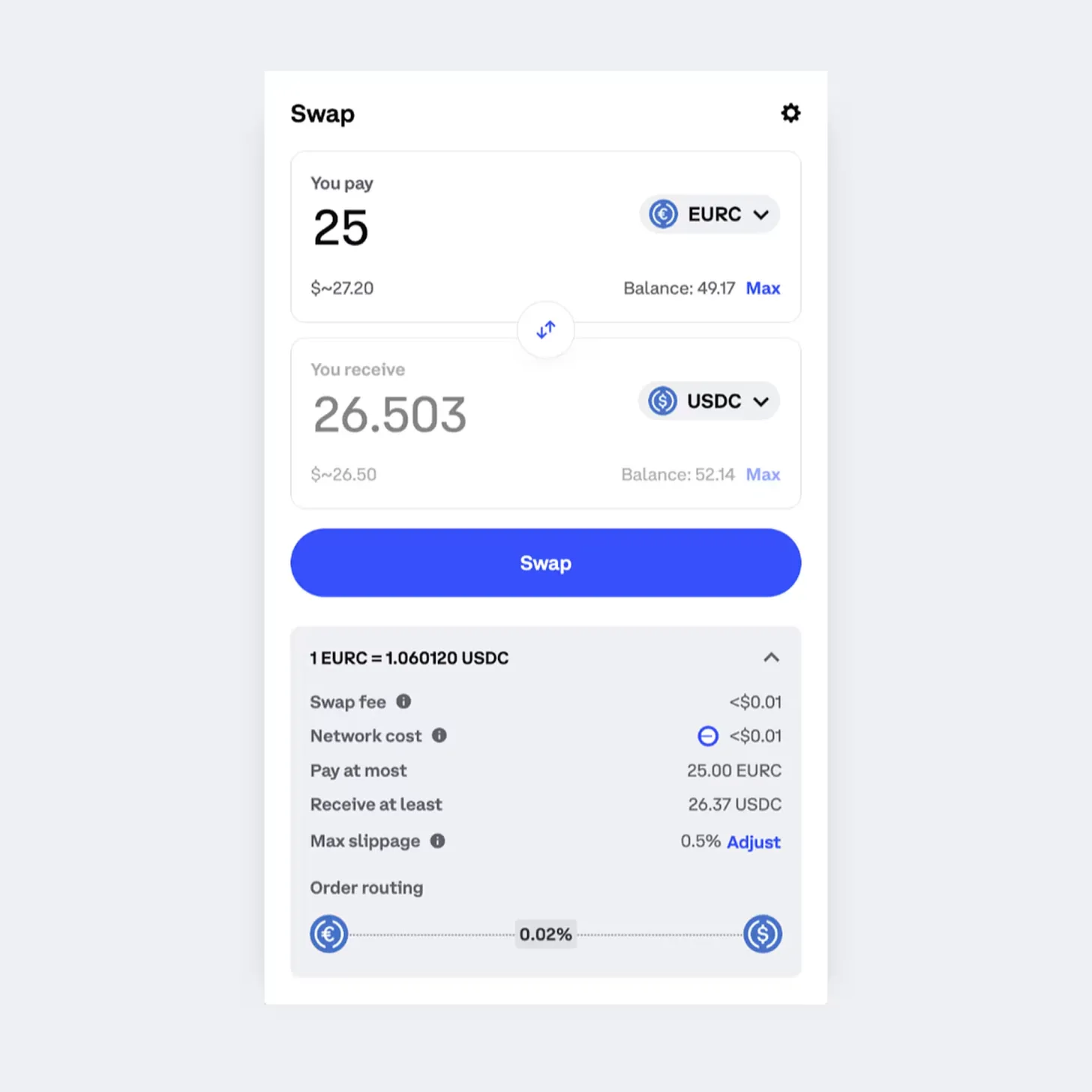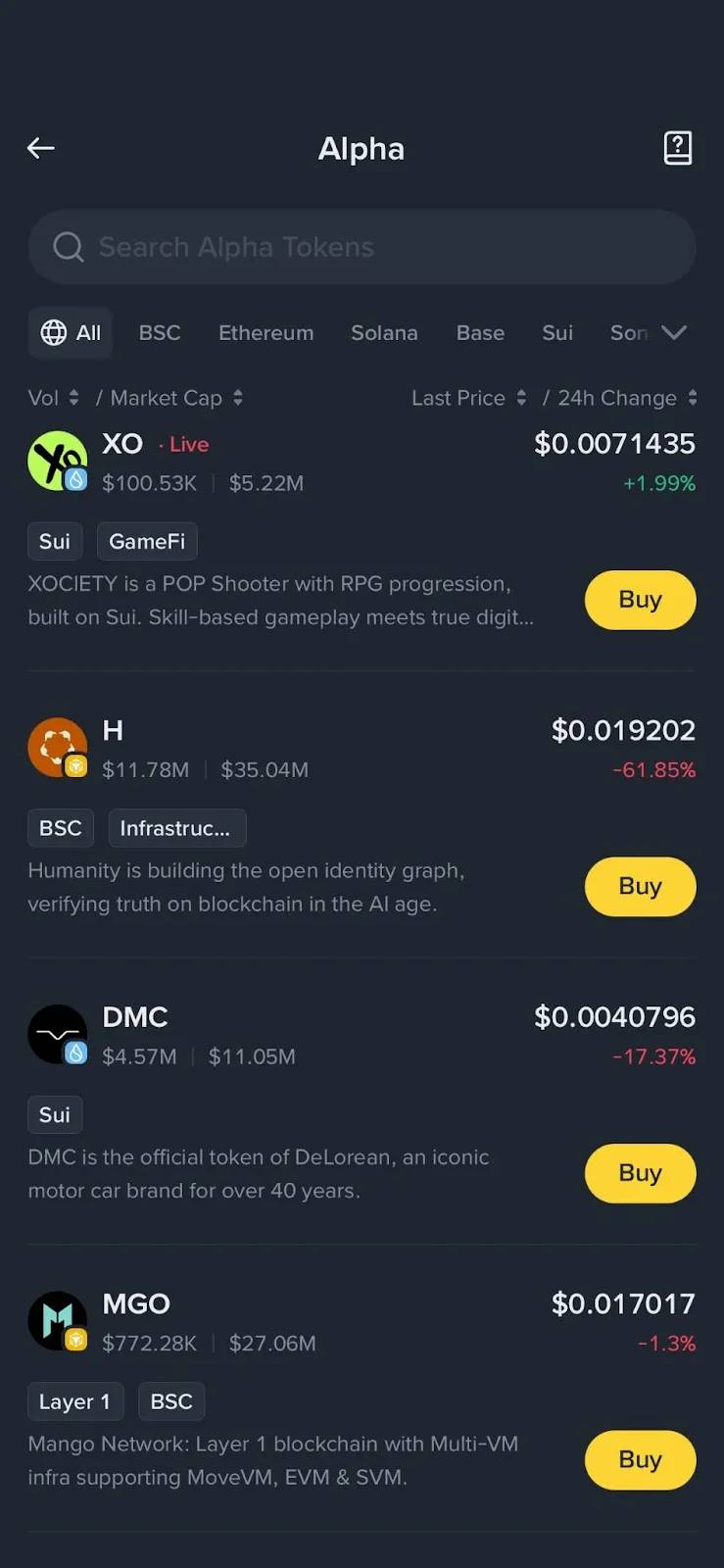Original article by Chi Anh and Ryan Yoon
Original translation: TechFlow
The report, written by Tiger Research, analyzes why major centralized exchanges (CEXs) like Bybit, Binance, and Coinbase are entering the DeFi space and their strategies.
summary
Strategic differentiation: Binance provides retail-centric on-chain services aimed at lowering the entry barrier for Web3. Bybit launched an independent platform, ByReal, to provide CEX-level liquidity on-chain. Coinbase adopts a dual-track model, targeting retail and institutional users.
Why CEX turns to on-chain: As early tokens are increasingly launched on decentralized exchanges (DEX), centralized exchanges face listing delays due to regulatory audits - losing trading volume and revenue. On-chain services enable them to participate in early token flows and retain users without a formal listing.
The future of CeDeFi: Platform boundaries are blurring. Exchange tokens are evolving from fee discount tools to core assets that connect centralized and decentralized ecosystems. Some DeFi protocols may be absorbed into larger CEX-dominated networks, accelerating the formation of an integrated hybrid market.
1. An opportunity not to be missed: CEX moves to the chain
Binances recent initiative, Binance Alpha, has become the focus of the market. Operated by the Binance team, Alpha serves as a DeFi-based listing platform that enables retail users to access early-stage tokens faster than traditional exchange channels. This greatly improves the accessibility and participation of tokens, especially through mechanisms such as Alpha Points, which promote targeted airdrops to users.
However, the model is not without controversy. Several tokens listed through Alpha saw sharp price drops shortly after launch, sparking debate over the program’s structure and intent. Despite the mixed reviews, one trend is clear: centralized exchanges are no longer bystanders in the DeFi ecosystem — they are now active participants.
This shift isn’t limited to Binance. Other major platforms are also moving on-chain. For example, Bybit recently announced ByReal, a DeFi platform built on Solana. Coinbase has also revealed plans to integrate on-chain services directly into its app. These developments are indicative of a broader structural shift underway in the exchange industry.
The key question is: Why would centralized exchanges, which have long relied on a stable, revenue-generating business model, enter the inherently volatile DeFi market? This report analyzes the strategic rationale behind this shift and examines the market dynamics driving this evolution.
2. The current status of CEX entering DeFi: What are they building?
Before analyzing the strategic motivations of centralized exchanges to enter the DeFi space, it is first necessary to understand what they are actually building. While these efforts are often grouped under the broad trend of “CeDeFi” (centralized-decentralized finance), the implementation varies significantly across platforms.
Bybit, Coinbase, and Binance have each taken a different approach — with differences in architecture, asset custody models, and user experience. Understanding these differences is critical to evaluating their respective strategies.
2.1. Bybit’s ByReal: Providing CEX-level liquidity through an independent DEX

ByReals first announcement. Source: @byreal_io
On June 14, Bybit announced ByReal as an on-chain extension of its exchange infrastructure. The main goal is clear: to replicate centralized exchange-level liquidity in an on-chain environment. To do this, Bybit uses a hybrid design that combines a request for quote (RFQ) system with a centralized liquidity market maker (CLMM) model.
The RFQ mechanism allows users to request quotes from multiple brokers before executing a trade, achieving price optimization through professional market makers. The CLMM model concentrates liquidity within the active trading price range, improves capital efficiency and reduces slippage - all key factors in approximating the CEX trading experience on the chain.
At the same time, ByReal remains decentralized at the user level. Assets are self-custodied through Web3 wallets such as Phantom, and the platform includes a token launch platform for new project issuance. It also provides yield generation capabilities through its Revive Vault, including Solana staking products such as $bbSOL.
Bybit’s strategic intent through ByReal is to create a parallel liquidity layer for early-stage tokens that may not meet the listing criteria of their primary exchanges, but which can thrive in a more open, community-driven environment. While the model is similar in structure to Binance Alpha, ByReal differentiates itself by integrating launchpad functionality and yield products into a more comprehensive service.
2.2. Coinbase: Dual-track strategy for retail and institutional users

Source: Coinbase
At the 2025 Crypto Summit, Coinbase announced plans to integrate DeFi trading directly into its main application, rather than through a separate wallet. This strategy is centered around providing a seamless user experience. By enabling DEX trading in the core application, users can access and trade thousands of tokens from the moment the asset is minted, without leaving the Coinbase interface.

Source: Coinbase
While DeFi is already accessible through the standalone Coinbase Wallet, the company has launched a key differentiating feature: Verified Pools. These pools are only open to institutional participants who have passed KYC (know your customer) verification, providing a safe and compliant environment for entities with regulatory obligations.
Ultimately, Coinbase has developed a complex dual-track strategy: serving retail users through smooth, integrated on-chain access, while providing a regulated, high-security liquidity venue for institutional users. This allows the company to cover both user groups while maintaining a balance between user experience and compliance.
2.3 Binance Alpha: A retail-oriented strategy to lower the threshold of Web3

Among the three major exchanges, Binance Alpha is the most retail-oriented product. Unlike other platforms that focus on decentralization, Binance prioritizes ease of use. Alpha can be accessed directly through a tab in the Binance main application, allowing users to trade without leaving the familiar interface.
Although all transactions are processed on-chain, users interact with Alpha through their existing Binance accounts, without having to set up a separate wallet or manage mnemonics, greatly lowering the entry barrier for Web3 newcomers.
Although all three platforms are moving towards the CeDeFi model, their paths are significantly different. Bybit targets DeFi native users through a fully decentralized architecture and advanced liquidity mechanisms; Coinbase adopts a dual-track strategy, serving both retail and institutional customers through differentiated infrastructure; and Binance focuses on promoting mass adoption by simplifying Web3 complexity.
Each exchange is exploring its own trade-offs in asset custody, product curation, and integration depth, collectively shaping diverse entry points into this evolving CeDeFi ecosystem.
3. Strategic drivers of centralized exchanges (CEX) turning to DeFi
3.1 Seize early token opportunities and avoid listing risks
The first reason is straightforward: CEXs want priority access to popular tokens, but they can’t list them fast enough.
Most new tokens are now issued directly on decentralized exchanges (DEXs), where permissionless listing mechanisms and widespread awareness drive rapid volume growth. However, even if CEXs clearly see user demand, they are often unable to list these tokens immediately due to restrictions such as legal review, risk management, or regional compliance.
This delay carries a real opportunity cost. Trading volume flows to decentralized platforms like Uniswap, and CEXs lose listing fee revenue. But more importantly, users begin to associate token discovery and innovation with DEXs rather than CEXs.
By launching their own on-chain products, CEXs have created a compromise solution. Platforms like ByReal and Binance Alpha act as semi-sandboxed venues: tokens can be traded without going through formal listing channels, but still in a controlled and brand-safe environment. This allows exchanges to monetize user activity through exchange fees or token issuance mechanisms at an early stage while maintaining legal arms length. Exchanges provide access channels but do not directly custody or endorse these assets.
This structure provides CEXs with a path to participate in token discovery while avoiding triggering regulatory liability. They can both capture liquidity and generate revenue while directing activity back into their own ecosystems — while waiting for the formal listing review process to catch up.
3.2 Keep users on the chain to avoid loss
The second driver stems from user behavior. While DeFi leads the way in token innovation and capital efficiency, it remains difficult for mainstream users to easily access it. Most users are reluctant to manually transfer assets across chains, manage wallets, approve smart contracts, or pay unpredictable gas fees. Despite these obstacles, the most attractive opportunities (such as new token listings and yield strategies) are increasingly happening on-chain.
CEXs (centralized exchanges) have identified this gap and responded by embedding DeFi access directly into their platforms. All of the CEX integrations mentioned above allow users to interact with on-chain liquidity through a familiar CEX interface. In many cases, exchanges completely abstract away wallet management and gas costs, allowing users to access DeFi as easily as using Web2 applications.
This approach achieves two goals. First, it prevents user churn. Traders who might otherwise turn to DEXs (decentralized exchanges) can now stay in the CEX ecosystem even when using DeFi products. Second, it strengthens the platforms defensibility. By controlling the access layer and even gradually the liquidity layer, CEX builds a network effect that goes beyond spot trading.
Over time, this approach will translate into a user lock-in effect for the platform. As users become more sophisticated, many will seek cross-chain routing, yield products, and trading strategies. If a CEX has its own DEX infrastructure, Launchpad layer, or even a dedicated chain (such as Coinbases Base), it can ensure that users, developers, and liquidity are firmly bound to its ecosystem. User activity will be tracked, monetized, and recycled without flowing to third-party protocols.
In fact, on-chainization enables CEX to control the complete life cycle of user funds: from fiat currency deposits, to DeFi exploration, to the final token listing and exit - everything is done in a unified and revenue-generating system.
4. The future of CeDeFi
The expansion of large centralized exchanges (CEX) to the chain marks an important inflection point in the evolution of the crypto industry. CEX no longer regards DeFi as an external phenomenon, but begins to build its own infrastructure, or at least ensure direct access to the user layer.
4.1 Blurred Lines: The Rise of a New Trading Paradigm
As CEX integrates on-chain services, the line between exchanges and protocols is becoming increasingly blurred from a users perspective. A user using Bybit to trade on-chain tokens may not even realize whether they are interacting with a decentralized protocol or a centralized interface. This convergence could significantly reshape the liquidity architecture, product design, and user flow of the entire industry.
Institutional behavior will also be a key observation point, but a comprehensive capital influx is unlikely to occur in the short term. Institutions remain cautious, mainly because some risks have not yet been resolved: regulatory uncertainty, smart contract vulnerabilities, token price manipulation, and opaque governance mechanisms.
Exchanges launching on-chain services does not eliminate these structural risks. In fact, some institutions may view exchange-intermediated DeFi access as a new layer of intermediary risk. Realistically, early attempts may come mainly from hedge funds and proprietary trading firms, which will deploy small-scale capital to experiment. More conservative players, such as pension funds or insurance companies, are expected to remain on the sidelines for the next few years. Even if they participate, they are likely to adopt an extremely cautious allocation approach - typically no more than 1-3% of their portfolio.
Against this backdrop, forecasts of “billions of dollars in capital inflows” appear overly optimistic. A more realistic outlook is a gradual test in the hundreds of millions of dollars. However, even these modest inflows could go some way to enhancing market depth and easing volatility.
4.2 The evolving role of exchange tokens
As exchanges continue to expand their on-chain services, the functionality of native exchange tokens will evolve. Holding a certain amount of these tokens may bring users on-chain fee discounts or unlock yield opportunities through staking and liquidity incentives. These changes may introduce new utility to exchange tokens, but also new volatility.
Currently, Binance is the only major platform that provides clear and sustained utility for its native token (BNB), which plays an active role in multiple services, while the functionality of most other exchange tokens remains limited to basic fee discounts.
As CeDeFi infrastructure matures, this status quo will change. When exchanges operate integrated on-chain and off-chain platforms, their native tokens will become the link between the two worlds. Users may need to hold exchange tokens to participate in staking, Launchpool, or get priority early access to newly launched projects - whether centralized or decentralized.
This functional expansion allows exchange tokens to go beyond simple utility assets. They will become core assets in vertically integrated ecosystems. Exchanges that already have tokens may significantly enhance the utility of their tokens, while exchanges that have not yet issued tokens may consider launching new tokens to support DeFi-related services. This is especially likely for platforms that develop their own blockchains or differentiated DeFi layers.
In short, exchange tokens are evolving from simple fee-collecting tools to strategic assets that play a key role in user retention, protocol integration, and cross-platform capital flows.
4.3 Integration in Progress: A New Competitive Landscape
CEX’s push for the expansion of on-chain services is more than just a defensive strategy; it represents a positive bet on the future of the crypto ecosystem. Exchanges no longer view DeFi as a threat, but rather as an adjacent space that can be integrated or even absorbed.
The most likely scenario is convergence. Major exchanges will increasingly operate semi-decentralized networks, and independent DeFi protocols may find themselves dependent on these growing ecosystems or even integrated into them. This could eventually lead to a redistribution of power and liquidity, with CEX-dominated platforms becoming the gravitational center of DeFi activity.
This trend could lead to a more unified market structure, with liquidity flowing freely between centralized and decentralized environments. Users will be able to choose a combination of trust, transparency, and convenience based on their preferences. The competitive landscape is changing, and Bybit’s launch of ByReal may be an early sign of this hybrid future taking shape.










